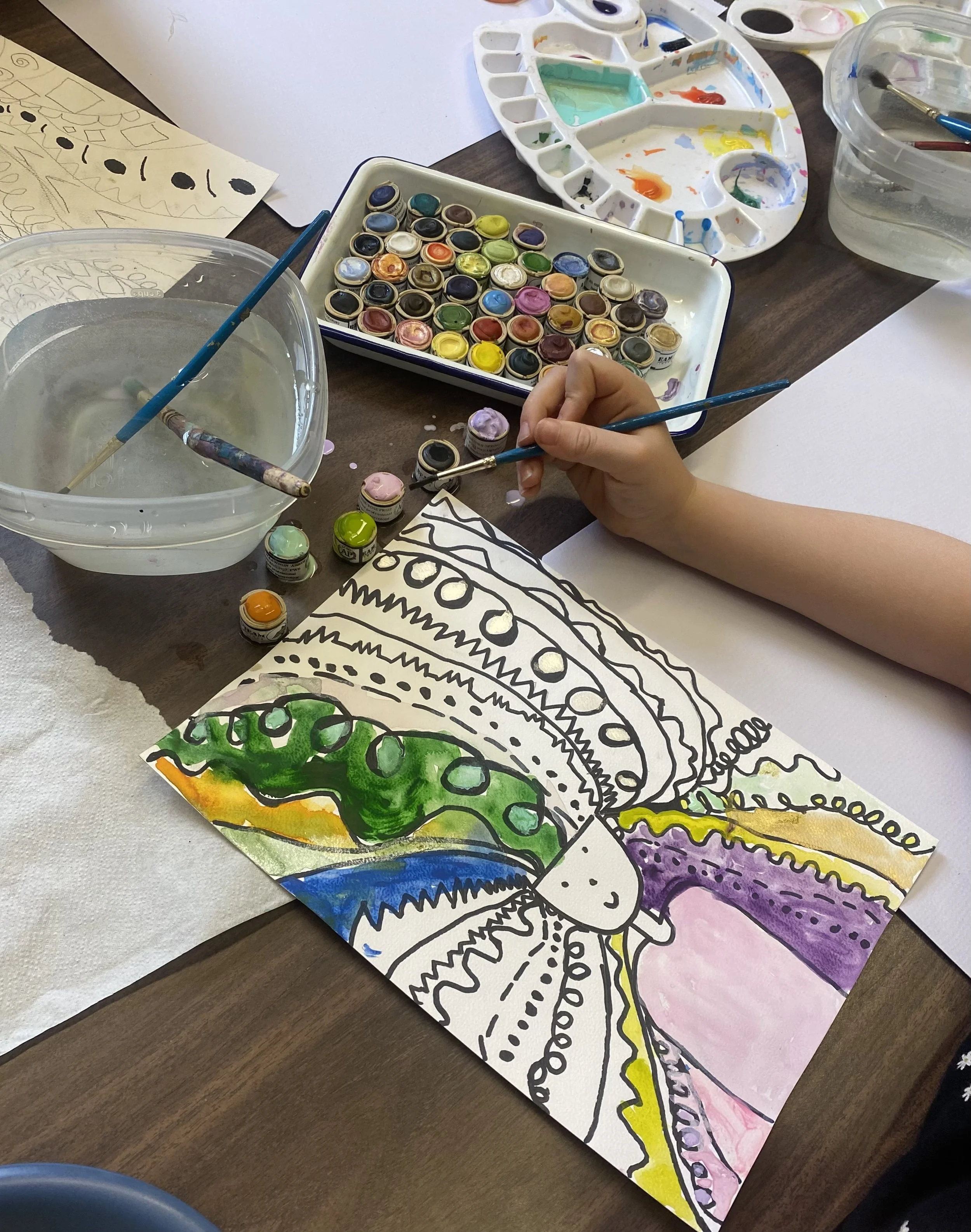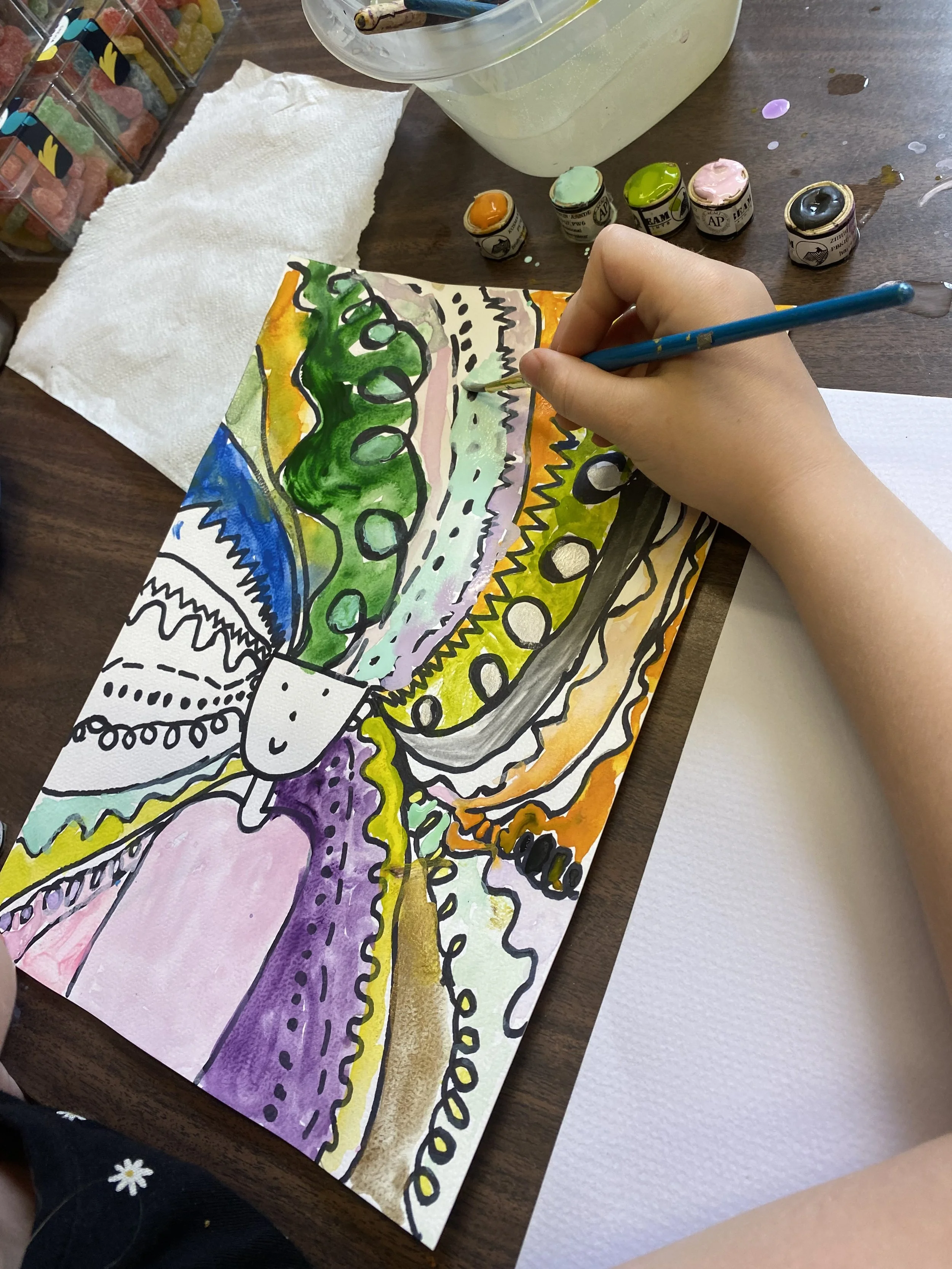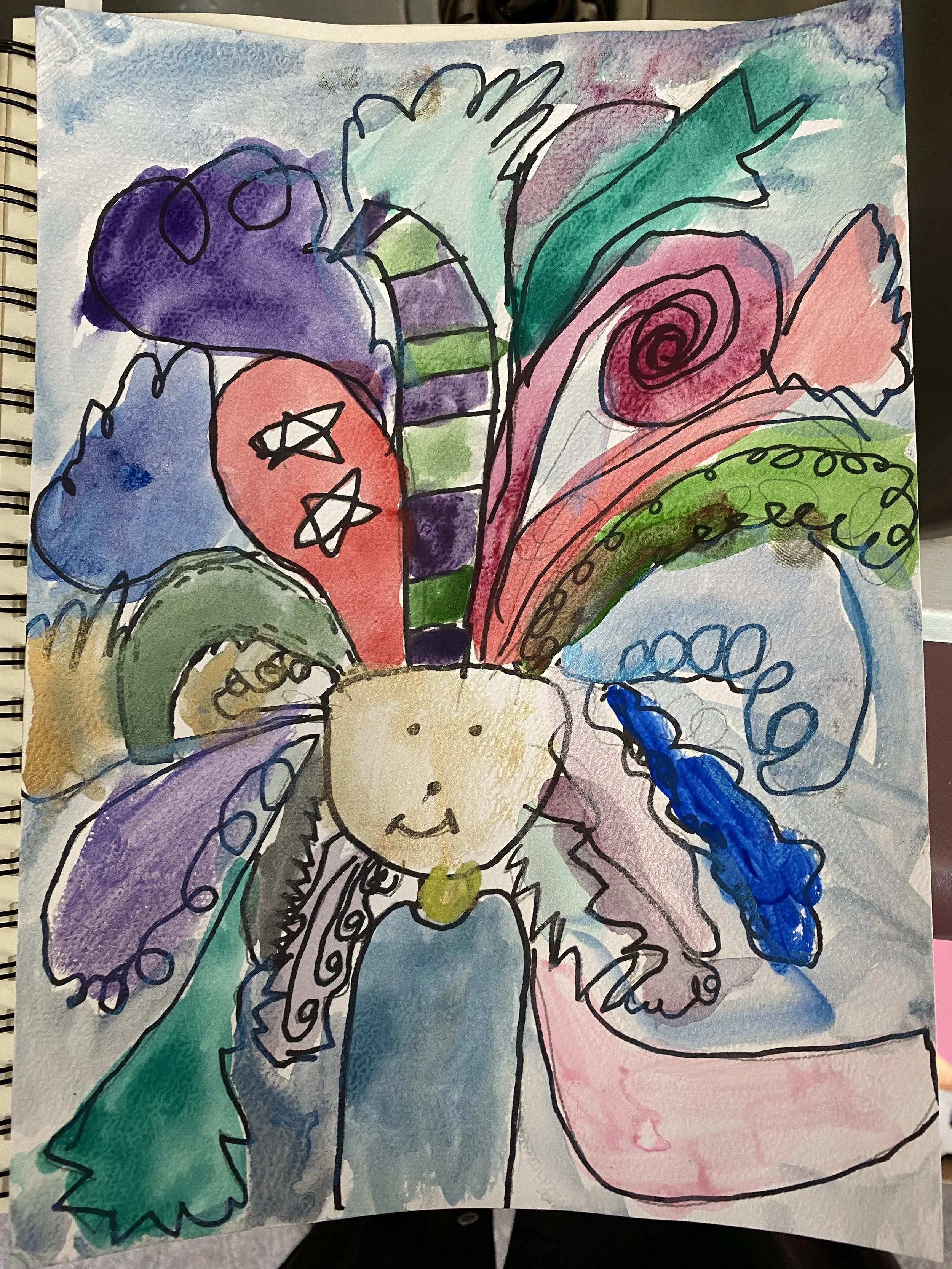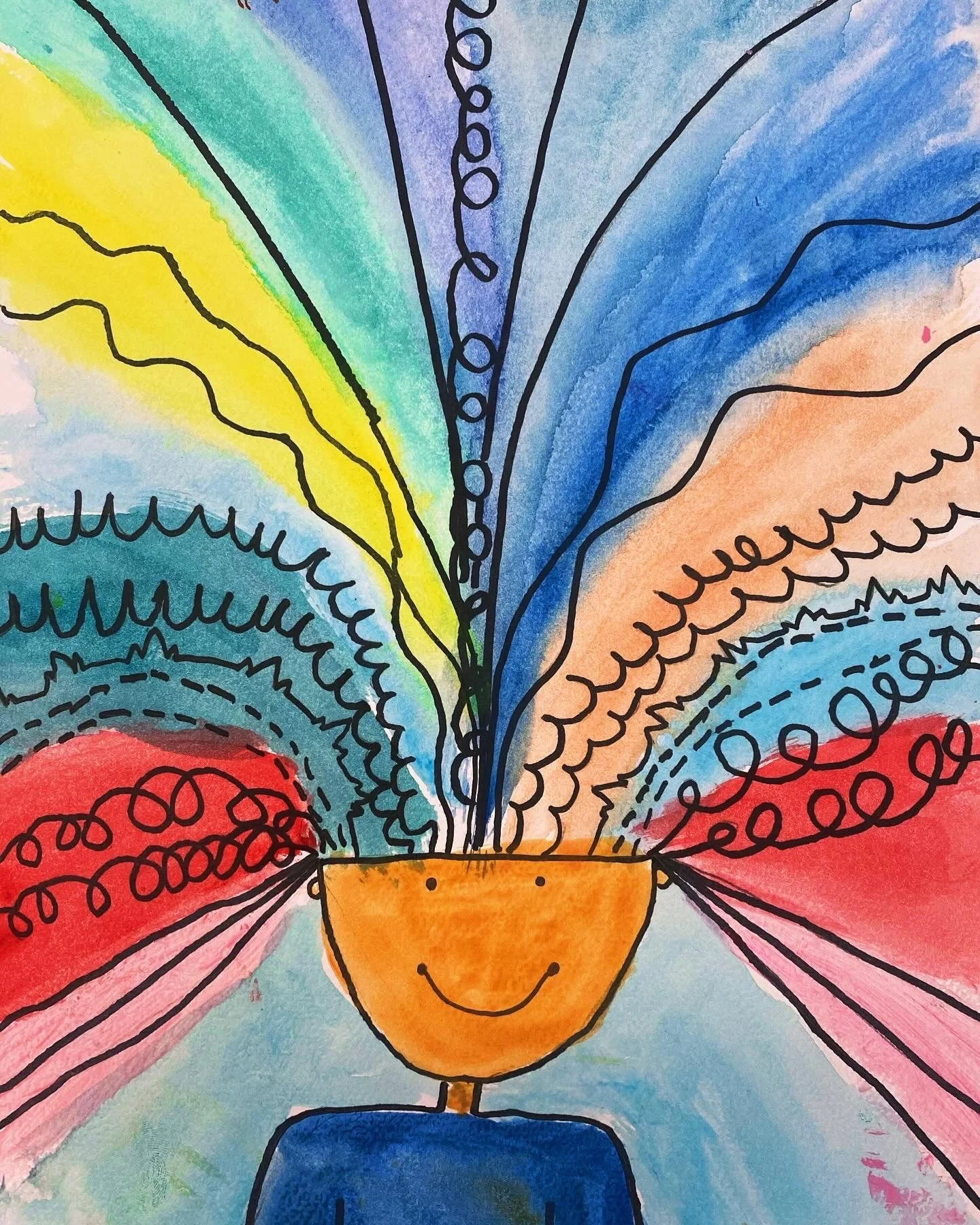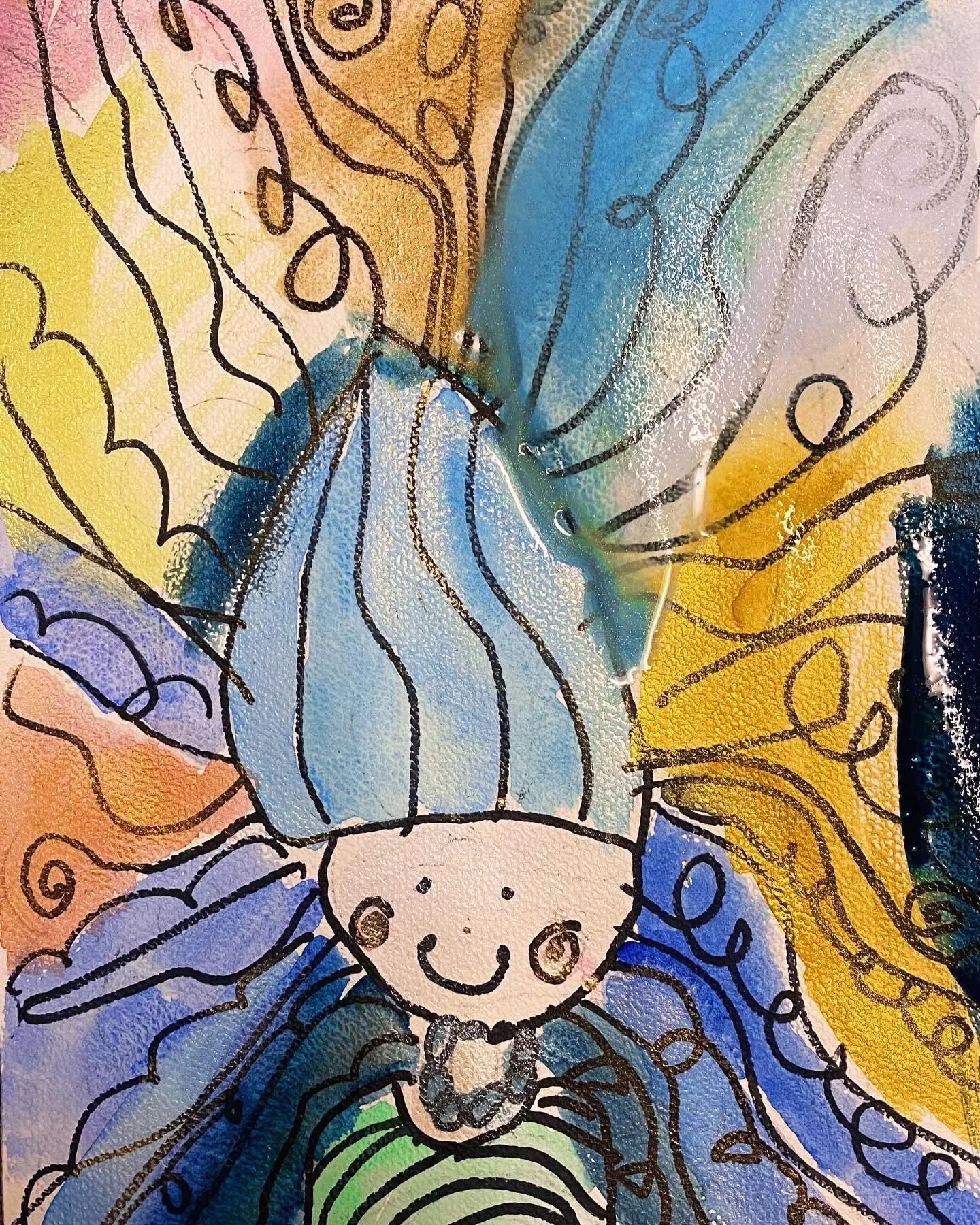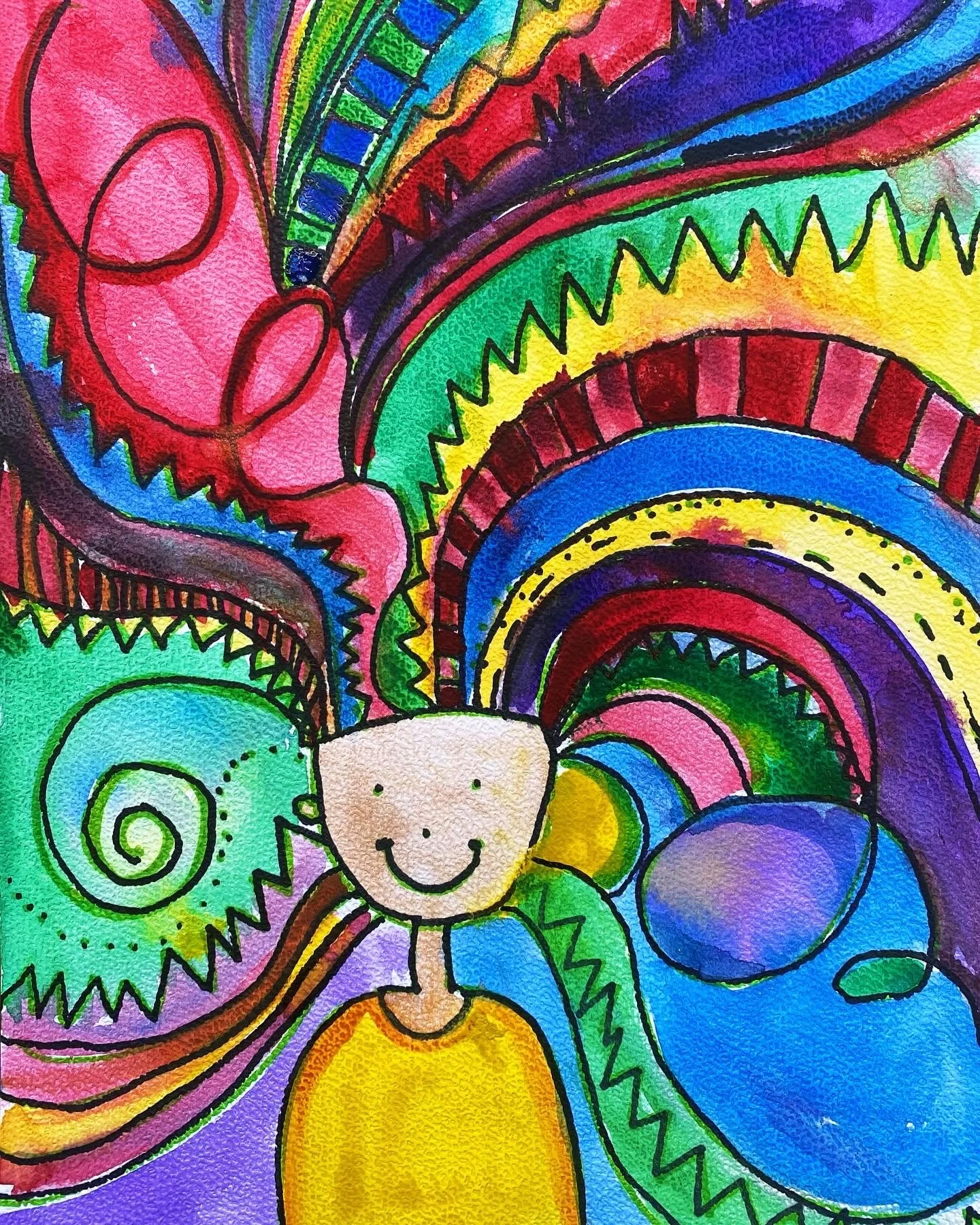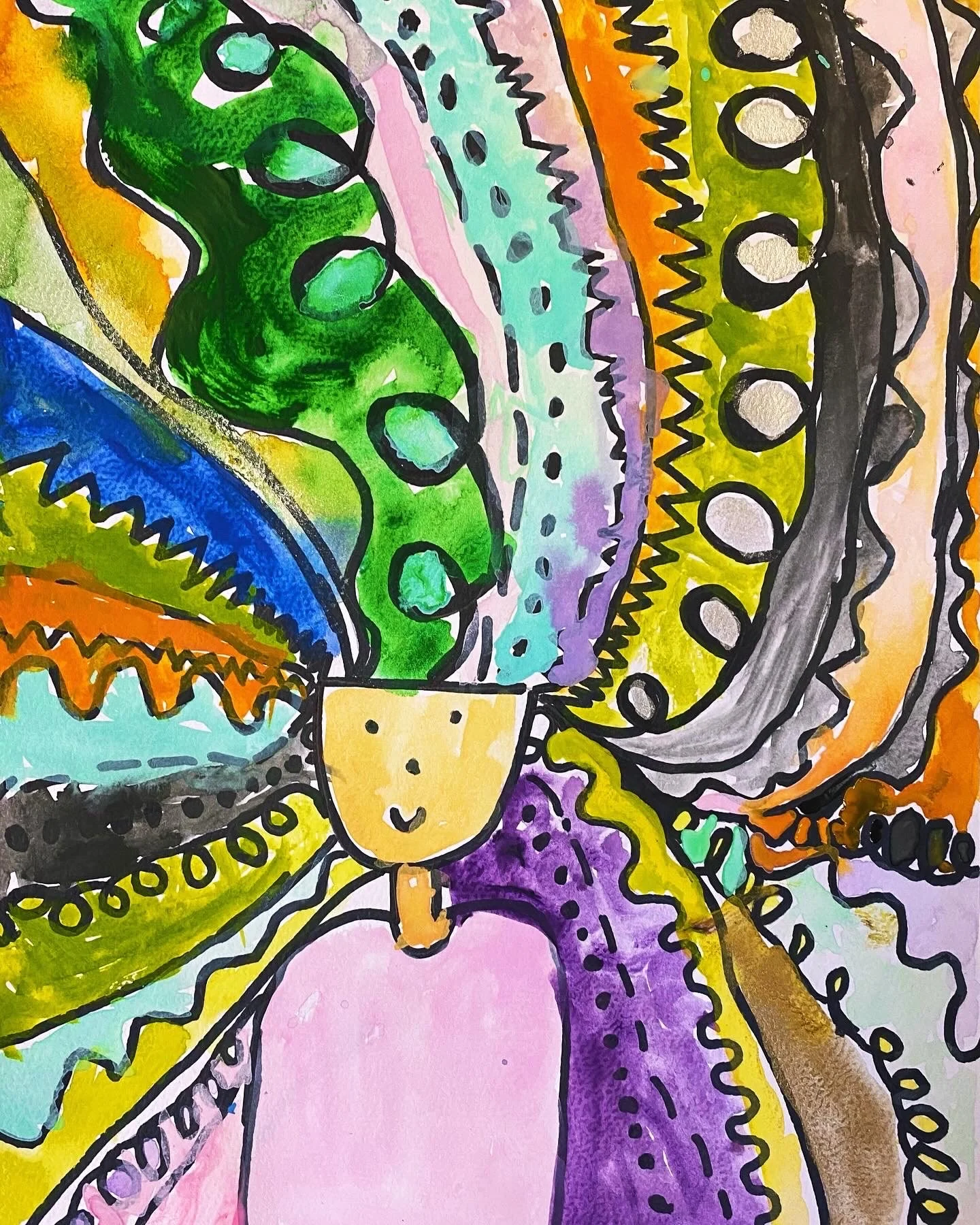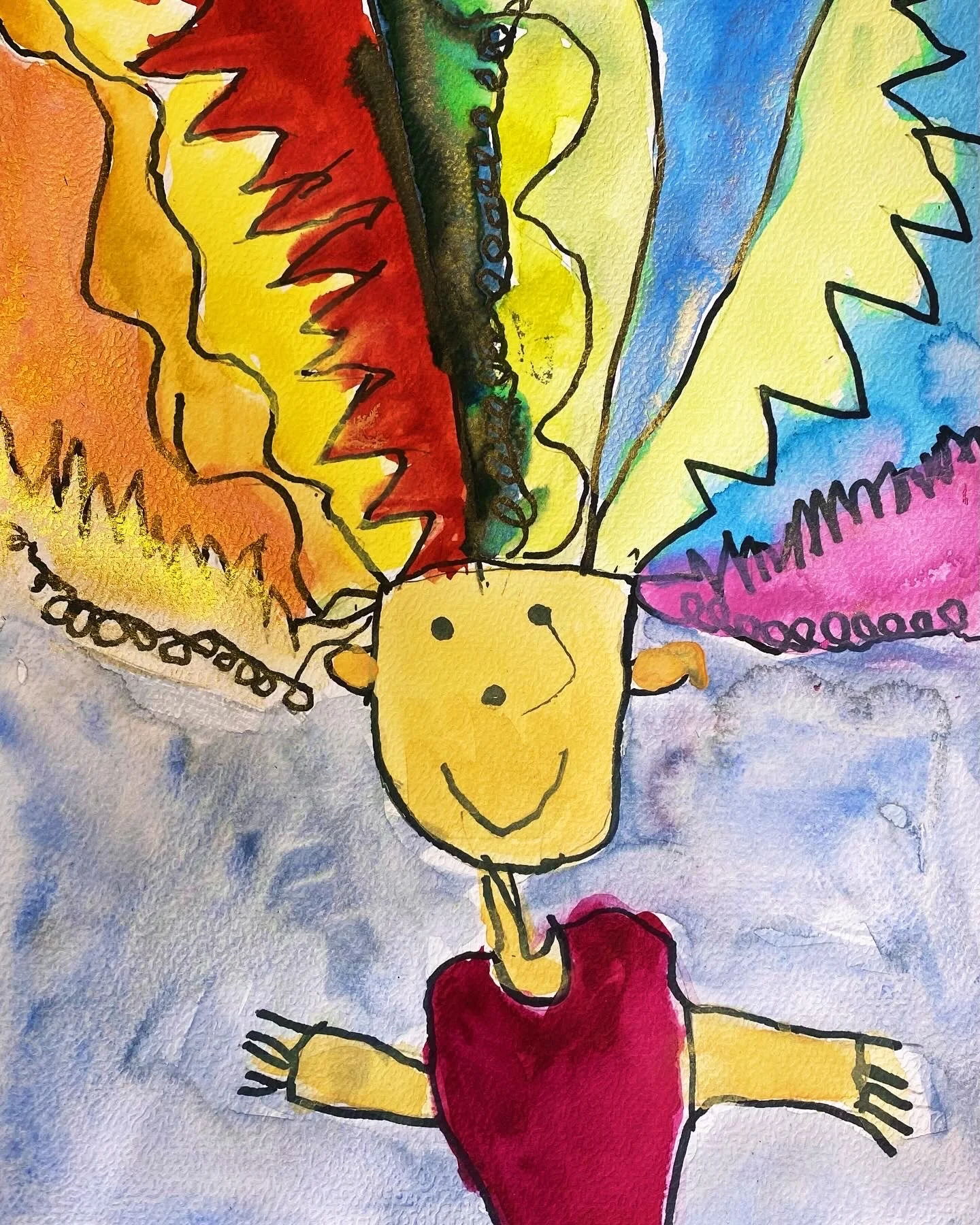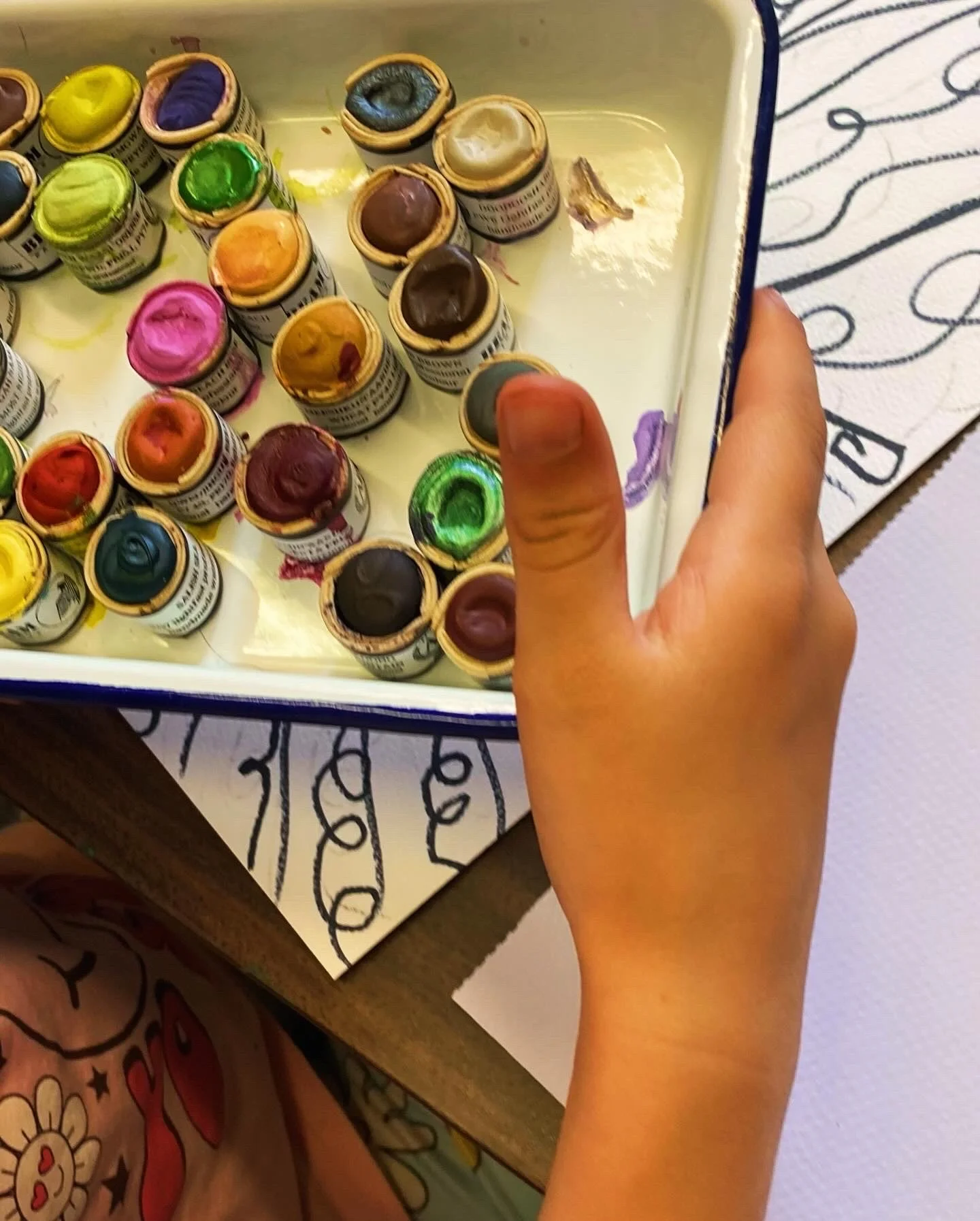Wild Hair Watercolours: Exploring the World fo Art with Line and Colour
Grade Level: 1-3
Subject Area: Visual Arts, Language Arts, Social Studies, Science
Duration: Half-day
Objectives:
Students will understand the concept of lines in art and their ability to convey emotion, movement and form.
Students will explore their creativity and imagination through the creation of wild hair drawings.
Students will learn about the cultural significance of Beam Paints and appreciate some of the contributions of Indigenous peoples in the art world.
Students will experiment with different colours derived from natural elements found on Manitoulin Island.
Students will express themselves freely and safely through the use of non-toxic art materials.
Curriculum Expectations:
Visual Arts (Ontario Ministry of Education grades 1-3):
Explore the element of line in art (e.g. vertical, horizontal, diagonal, curved, thick, thin).
Use of various materials and techniques to create art (e.g. pencils, markers, watercolour paper, watercolours).
Express ideas feelings and experiences through art.
Appreciate and analyze works of art from diverse cultures and times.
Language Arts (Ontario Ministry of Education grades 1-3):
Communicate ideas and information orally and in writing.
Use descriptive language to express thoughts and feelings.
Understand and appreciate different forms of artistic expression.
Social Studies (Ontario Ministry of Education grades 1-3):
Discuss diverse cultures and traditions.
Recognize and appreciate an aspect of the contributions of Indigenous peoples in Canada.
Science (Ontario Ministry of Education grades 1-3):
Explore natural elements (e.g. flowers, rocks, earth via the material used to make paints).
Understand the important of safety and non-toxic materials.
Materials:
Pencils
Markers
Beam Paints and other watercolour paints as well
Watercolour brushes
Water containers
Paper (drawing and watercolour)
Workshop Plan
Introduction:
a. Begin the lesson by discussing the importance of lines in art. Explain how lines can convey different emotions, create movement and define form. Show examples of artworks that use different types of lines.
b. Engage the students by asking them to share their favourite artworks and how the lines in those artworks make them feel.
Demonstration/Hands-On Activity:
Wild Hair Drawings:
a. Distribute pencils and paper to each student.
b. Instruct students to sketch whimsical hairstyles, encouraging them to let their imagination run wild. Emphasize the use of different types of lines in their drawings and show examples.
Once the sketches are complete, provide markers for students to outline their drawings. Explain how the addition of lines will bring their creations to life, adding definition and character to their wild hair drawings.
Discussion: Introduction to Beam Paints:
a. Gather the students together and introduce them to Beam Paints. Share the story behind the paints, including the founder’s connection to the LaCloche mountain range near M’Chigeeng First Nation on Manitoulin Island.
b. Show the paints wrapped in natural materials and embedded in tiny birch bark containers. Explain that each container contains vibrant and enchanting mineral-based colours derived from natural elements found on Manitoulin Island. That all the packaging is 100% recycled, all natural and completely environmental friendly.
Demonstration/Hands-On Activity: Watercolour Painting - Painting with Beam Paints and Other Types of Watercolour Paints:
a. Distribute watercolour brushes, water containers and Beam Paints to each student.
b. Instruct students to dip their brushes into water first and add to paper (wet on wet techniques) and then the paints and explore the wide range of colours available. Encourage them to experiment with different combinations and techniques and discuss how the paint flows and moves, blotting, vibrancy intensity to create contrast, etc.
c. Remind students to express themselves freely and allow their unique personalities to shine through their art pieces.
d. As students paint, walk around the classroom and provide support, guidance and encouragement.
Reflection and Discussion:
a. Gather the students together and ask them to reflect on their artistic experience.
b. Facilitate a discussion about the colours, saturations and vibrancies of the paints. Encourage students to share their discoveries, such as sparkles and glittery minerals left behind in the water as they washed their brushes.
c. Connect the discussion to the importance of using non-toxic materials and cultural significance of Beam Paints along with a review of some of the minerals and ingredients used to make Beam Paints.
d. Teach students how to create an “artists statement” in a short group descriptive writing activity about their wild hair watercolours as a classroom. This activity can be done as a group “artist statement” or students can go back to their desks to create their own individual statements.
e. If there is time, have students share their art and artist statements in a final group discussion.
Cross-Curricular Components (more in depth explanation for curriculum integration):
Science Integration:
Explore Natural Elements: Introduce the scientific aspect of natural elements used in art, such as the mineral-based colours derived from natural elements found on Manitoulin Island. Discuss the properties and characteristics of these natural elements, including flowers, rocks and art, and how they are used to create Beam Paints. This aligns with the Ontario Ministry of Education’s expectation for students to explore natural elements and understand their importance.
Social Studies Integration:
Discussion of diverse cultures and traditions via Beam Paints as a “hook”,
Recognize and appreciate the contributions of Indigenous peoples in Canada.
Language Arts Integration:
Descriptive Writing: In the cross-curricular component, students will be asked to write a short artist’s description or narrative about their painting as a group or individually. This activity aligns with the Language Arts curriculum expectations, specifically the use of descriptive language to express thoughts and feelings. Students will practice using descriptive language to convey the emotions and ideas behind their designs, connection their artwork to the written component.
By integrating these components, the lesson plan will provide a comprehensive learning experience that aligns with some of the Ontario Ministry of Education’s curriculum expectations for grades 1-3 in Visual Arts, Science, Social Studies and Language Arts.
Assessment:
Observe students’ engagement and participation during the activity.
Assess students’ understanding of lines in art by reviewing their wild hair drawings. Look for the use of different types of lines and the overall expression of creativity.
Evaluate students’ ability jot experiment with different colours and techniques using watercolour paints.
Monitor students’ ability to communicate their thoughts and feelings about their artwork during the reflection and discussion.
Extension Activities for Teachers:
Create a class installation display using students’ wild hair paintings, showcasing the diverse use of lines and colours.
Research and explore other art forms that use lines as a primary element (e.g. calligraphy, zentangle).
Continue to discuss and analyze works of art from different cultures and times, focusing on the use of lines and colours to convey meaning and emotion.
All art classes and workshops can be altered to meet any grade level or expectation.
